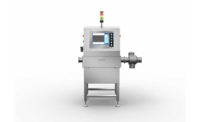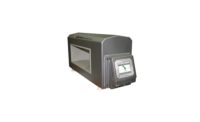Advanced Detection
Advanced Detection
As more processors rely on metal detection as a vital part of their food-safety program, suppliers are introducing detectors featuring fewer components that are designed to be more rugged.
Metal detectors are integral to a processor’s food-safety program. Often set up on the line either immediately after or prior to packaging, metal detectors provide a final and detailed inspection of the product recognizing virtually all foreign particles.
Initially, the question for processors was “are there any metal detectors on your line?” As the technology has become more affordable and efficient, most processors answer the above question with a “yes.” With recent advancements to detectors, the questions have become “how many components are in your detector?” or “how rugged is your detector?”
Carol Stream, IL-based Loma Systems is one of the first suppliers to feature metal detectors with fewer components. Loma’s newest generation of metal detectors the IQ2 incorporates technological software requiring a single chip to perform functions that formerly required seven. As well, multiple boards and separate power supply units have been eliminated with the power supply being integrated into one control board.
“The simplified construction of the IQ2 provides a high level of serviceability, ease of use, and reliability,” explains Gary Wilson, president of Loma Systems.
Loma’s advancements don’t stop at the reduced number of components. A redesigned control panel replaces text with an icon-driven display, which offers greater communication flexibility in multi-language work environments. The 20-character, dot-matrix display is bright and easy-to-read and allows the operator to select the display to best meet the company’s production objectives.
Another advantage to new metal detectors is the ability to remain hermetic to high-pressure wash-downs. Minneapolis, MN-based Thermo Electron Corporation has introduced its Goring Kerr DSP IP Metal Detector that meets and exceeds IP69k — the most demanding wash-down rating in the industry. The IP69k standard specifies proof against ingress of water from jets at 1450-psi and at temperatures of up to 176°F.
Drawing up the Goring Kerr DSP3 range of digital signal processing metal detectors, the DSP IP features a stainless steel membrane keyboard. The membranes, traditionally the weakest point during wash-down, are made from thin stainless steel etched with the key symbols. Also, the seals on the DSP IP have been specially engineered to include protective metal flanges designed to deflect water jets away from the seals. Like the Loma IQ2, the DSP IP boasts a more compact unit by incorporating the entire power supply and I/O wiring into the detection head, instead of in the traditionally separate control box.
Suppliers in this feature include:
• Ansell Healthcare Incorporated, phone (732) 345-2188, or visit www.ansell.com
• Thermo Electron Corporation, phone (763) 783-2630, or visit www.thermo.com
• Loma Systems, phone (630) 681-2050, or visit www.loma.com
• Thermo Electron Corporation, phone (763) 783-2630, or visit www.thermo.com
• Loma Systems, phone (630) 681-2050, or visit www.loma.com
Metal detection and gloves
The detectors themselves are not the only pieces of equipment that are improving for increased metal detection performance. Red Bank, NJ-based Ansell Healthcare Incorporated offers a line of ScanSafe detectable gloves that incorporate Food and Drug Administration compliant materials that can be detected by metal detectors. If knife cuts or abrasions should leave glove particles in food products, the contamination can be detected before it becomes a potentially expensive quality problem.
Recent studies show that having this capability may save some food processing plants as much as $15,000 per week by reducing the amount of product that must be discarded or reworked, reports Scott Atkinson, business development manager of food service and food processing markets for Ansell.
“Contamination is not only costly in terms of product losses, but it diminishes the overall product quality and can destroy a company’s image and the loyalty it enjoys among its customers — including consumers,” he says.
The material and process used to manufacture ScanSafe gloves allows glove particles to be detected at normal processing speeds of 90-to-100 feet per minute.
Looking for a reprint of this article?
From high-res PDFs to custom plaques, order your copy today!







